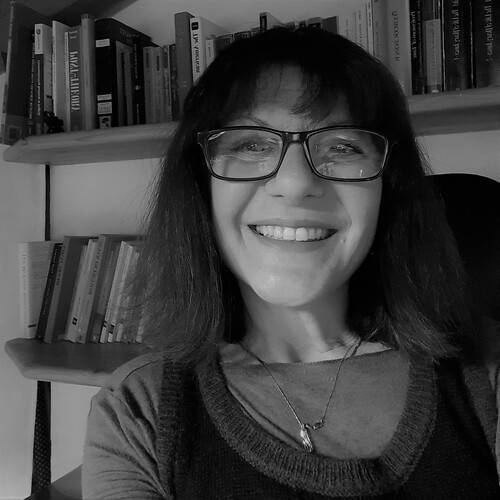Chair
Sandra Parmegiani
Transcultural Journalism: Italian Periodicals and the English Novel
Abstract
During the long eighteenth century, the Italian periodical press underwent a steady growth. The birth of new periodicals was accompanied by local imitation of foreign models that needed to be adapted to the local sociocultural space of a politically fragmented, pre-unified Italy. In a few but significant instances, periodicals were also the final byproducts of the transformation of serialized literary anthologies, a
genre that sought to adapt itself to a versatile and quickly changing market. This paper presents the results of a digital project currently underway on the reception of foreign literature in the Italian press, with a particular focus on the reception and dissemination of the English novel. With its European dimension (thanks to the frequent translations and adaptations of foreign material) and its wide circulation across an expanding body of readers, the press constitutes a most valuable channel for understanding the Italian negotiation of the moral and social values of England, its customs and literary innovations. The Italian debate on the novel, a genre that – as McMurran reminds us – did not simply move from »one nation to another, but dangled between languages and cultures,« is therefore instrumental to a better understanding of »the dynamic history and changing meaning of fiction’s mobility« in eighteenth-century Europe. This paper shows the use computational methods within the CWRC (Canadian Writing Research Collaboratory) digital environment to map and interpret the transmission, reuse, adaptation and sociocultural contextualization of about 700 reviews (both of ›Italianized‹ English and French reviews and of original approaches to English novels in the Italian press). The analysis of this »granular« material reveals a network of European inter- and trans-cultural transfers and adaptations that address: 1. a largely uncharted aspect of Anglo-Italian intercultural relations, 2. the role of the French periodicals as preferred cultural mediators, and 3. the role of European journalism in
the history of Italian readership during the long eighteenth century.

Sandra Parmegiani
Sandra Parmegiani is Associate Professor of European Studies and Italian at the University of Guelph.

Rosalie Engels
Rosalie Engels finished her Master’s degree in the Erasmus Mun-dus programme »Crossways in Cultural Narratives« in the summer of 2020. Her graduate dissertation focused on British Grand Tou-rism in the second half of the eighteenth century. She now works as an editor and television producer for the culture department of Deutsche Welle in Berlin.
Monday, 14th June 2021 at 15.45 CEST (UTC+2)
Júlia Fazekas
Literary Magazines in the Market – Hungarian Periodicals and European Connections in the 1840s
Abstract
In the 1840s the so-called fashion magazines were one of the most significant periodicals in Hungary. They mainly focused on literature, but also published theatre reviews, scientific papers, news-segments, gossip columns and fashion plates. These magazines aimed to gain a wide readership and wanted to shape the literary sphere, publish influential works, and facilitate Hungarian education and reading through them. These magazines were inspired by different types of periodicals. Hungarian yearbooks, almanacs, and literary journals from the beginning of the 19th century notably affected them, but their foreign connections were, potentially, even more instrumental. These Hungarian magazines followed similar French and German models, and during their publication numerous contemporary European periodicals affected them.
I want to explore the connections between fashion magazines in a European context and examine the relations of German, Austrian, French, and English periodicals as well as Hungarian ones. The postal service, the circulation of texts and illustrations affected publication in different countries, while copying and scissors-and-paste journalism were also common. From an economic standpoint, it is important that periodicals not only had to compete locally, but also had to take into consideration that readers would sometimes rather subscribe to a well-known foreign journal. Hungarian fashion magazines, for example, competed with multiple German papers. In my presentation, I want to focus on which titles were influential in this European context, what the circulation of different magazines meant regarding the market, and how editors related to different mediums. I believe the news-segments of different papers is especially interesting in this topic, but looking into the foreign correspondence and travel-writings seems promising as well. I would also like to examine illustrations and their reprints. I want to look at these magazines as complex products and consider how they positioned different elements and recontextualized foreign references.

Júlia Fazekas
Júlia Fazekas is PhD student at Eötvös Loránd University’s Doctoral School of Literary Studies. She participates in the Hungarian and European Enlightenment Doctoral Programme.
Monday, 14th June 2021 at 15.45 CEST (UTC+2)
Discussion
You are invited to discuss the papers in this section in advance of the live Q&A Session using the comment function below. Please make sure to indicate which paper you wish to comment on.


Thank you for your excellent presentation, which I felt was very informative as I did some work on “Der Spiegel” previously, yet, unfortunately, was not able to include any journals in Hungarian in my research.
A comment, if I may: In terms of German-speaking press in the 1840s I’d like to suggests looking for some more contemporary examples than “Journal des Luxus und der Moden” which pioneered in the field in the 18th century but lost its relevance by the time period you are speaking of.
Thank you so much for your comment! I agree about the “Journal des Luxus und der Moden”. For the Hungarian periodicals of the 1840s the most important contemporary German-speaking magazine was the “Wiener Zeitschrift”, but I will be looking for other connections to contemporary German fashion magazines, thank you for your advice!
Nice presentation, Júlia! Your research seems very interesting. What caught my attention the most was the scissors-and-paste practice involving the fashion plates. Were you aware of their existence beforehand or did you notice them during your research work? Did the magazine mention the provenance of the original image or not? Were the magazines related with each other at some extent?
Thank you for your comment and the questions! I was aware, that the Hungarian fashion magazines of the 1840s copied Parisian fashion, but I suspected they created their own fashion plates based on foreign templates. As you can see this was not the case: most fashion plates were copies of French or Austrian images, occasionally with minor adjustments. The Hungarian magazines always referred to the images as “Parisian fashion”, but they didn’t mention the source or the title of the magazine in which the original image was published. However, it is important to note that on the few occasions, when the Hungarian magazines published original fashion plates, the editors highlighted their originality. This meant that every other image was a copy (or a compilation of several images), and the readers were also aware of that. As one editor noted: with Hungarian magazines the Hungarian readers could get Parisian fashion plates (meaning: copies) cheaper, than if they were to subscribe to a French magazine.
What an interesting project, Sandra and Rosalie. Do the Italian reviews you map out and trace back genealogically also help to shed light on the conceptual history of the novel? After all, it was a genre under development during this period. And we tend to look at ideas about the novel in British and French contexts, and not Italian ones.
Thank you for your comment, Marguérite. Yes, this is indeed the case and by mapping the genealogies of reviews one can also map the inroad that the novel was making within a specific cultural and literary context. It is true that we tend to look at the novel and its reception within British and French contexts, but the influence of the genre is an excellent tool to map cultural specificity and the negotiation of ideas in a broader European context.
Júlia, what an interesting paper with great examples of the cut and paste methodologies of that time on your final slides. From your discussion I gathered that the literary fashion magazines you discuss were primarily targeting urban audiences. I was intrigued by the title Honderú which you translated as ‘Heimat’s Glück’. Did this periodical tap into the transeuropean fascination with the region and regional (often rural) traditions (and literatures and languages) of that time? The title in itself seems provocative.
Thank you Marguérite! Yes, these magazines mainly targeted urban readers. Interestingly, the magazine you are asking about viewed itself as a periodical for the aristocracy and payed little attention to other social classes. In contrast, another magazine, the one called Pesti Divatlap (‘Pesther Modeblatt’) wanted to focus more on other regions, not just the capital. This magazine published folktales and -songs, and articles about different regions. The title you are asking about (Honderü) had a different story behind it: István Széchenyi (an important politician, who established the Hungarian Academy of Sciences) found the name of the Hungarian capital (Pest-Buda) ugly, and argued that it should be called ‘Honderü’. One editor found it fascinating and chose it as a title of his magazine. This title also implied that the magazine valued Széchenyi’s goals over other politicians’ reforms. In 1848 the editor wanted to publish the magazine in German as well, but the title he chose wasn’t the translation of the word ‘Honderü’. This magazine was called ‘Morgenröthe’.
Thank you for a very rich and stimulating presentation. I am not an expert on Fashion magazines, but the co-presence of fashion and literature is particularly interesting. It poses also the question of the readers of those magazines, which catered to both men and women, scholars and a less invested readership. Are subscription lists available?
Did you ever suspect fashion to function, to a certain extent, as a masking of philosophical or literary content that would have looked suspicious to the censors? Could this hybridity be an element that would deflect the attention of Austrian censorship?
I think you did a marvellous job in showing the wide network of influences that played a seminal role in the making of the Hungarian Fashion magazines of the 1840s.
Thank you, Sandra! Sadly, these fashion magazines didn’t publish subscription lists, the editors and publishers even kept the exact number of their subscribers secret, although based on correspondence and memoirs I was able to gather some information. The fact, that these periodicals were published as fashion magazines and originally distanced themselves from any political topic, affected how the Austrian censor viewed them, yes. A periodical that mainly focused on fashion and literature didn’t seem as dangerous. But it is also important that because they were Hungarian periodicals and only people who understood Hungarian could read them, they weren’t as significant for the censors as periodicals that were written in German.
Thank you for your excellent presentation. I am interested in your approach and I will be interested in following your advancement.
I work on the British reception of Italian literature, at the moment in a traditional manner (monograph), but in the future I may look into collecting the data. I will be interested also in any publication you may have about your methodology.
Yours
Antonella (Université de Lorraine, Nancy, IDEA research center).